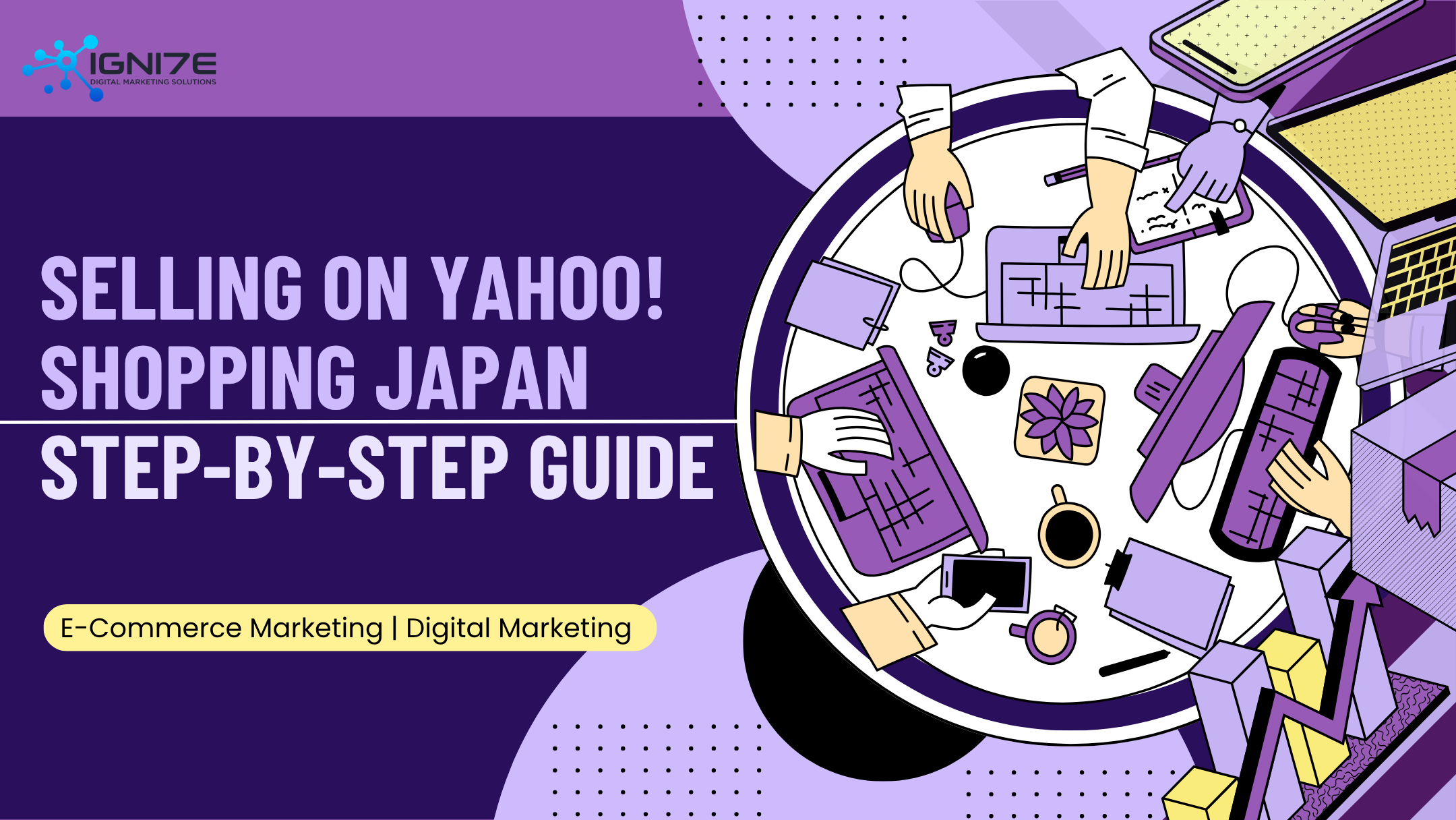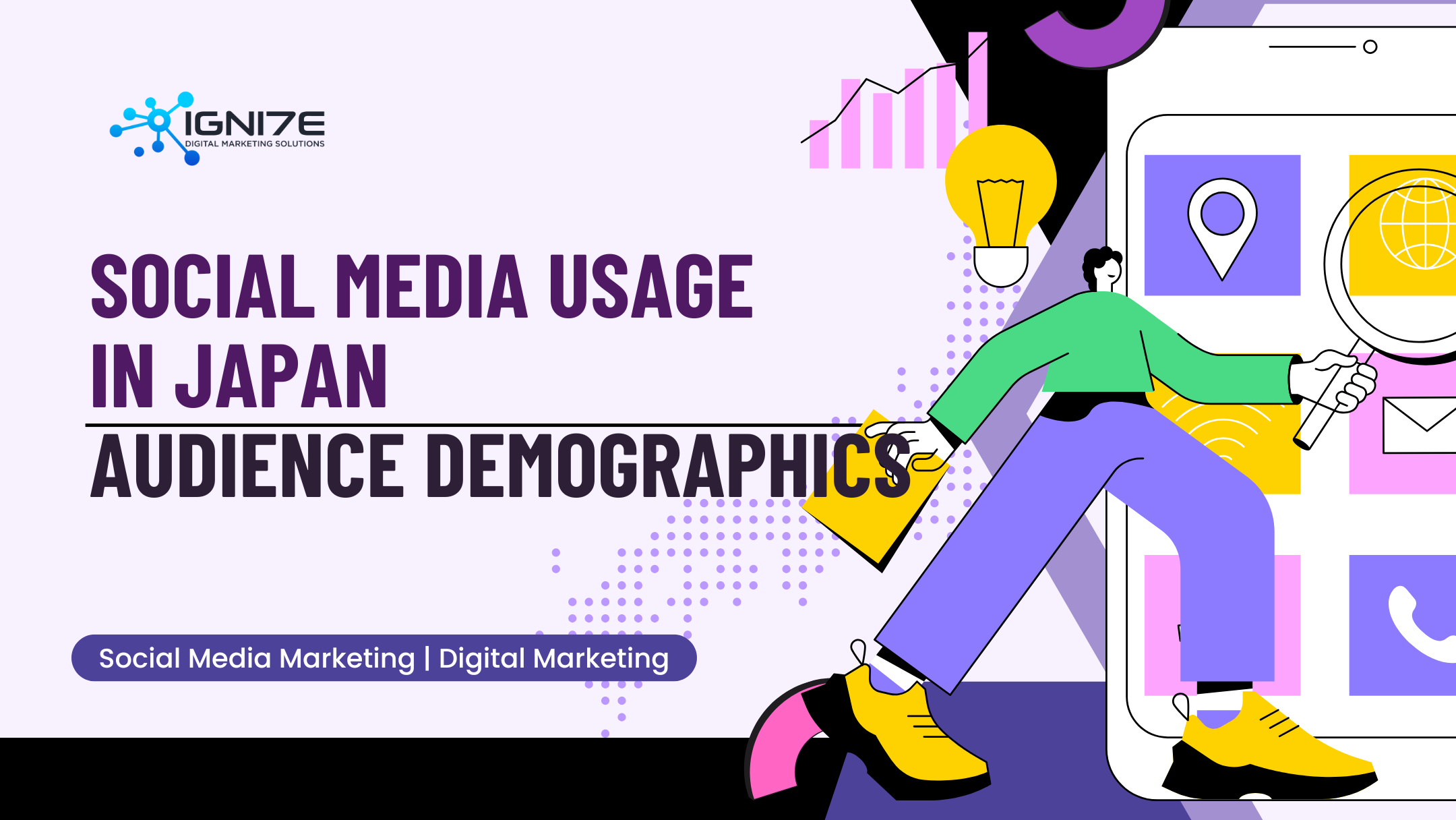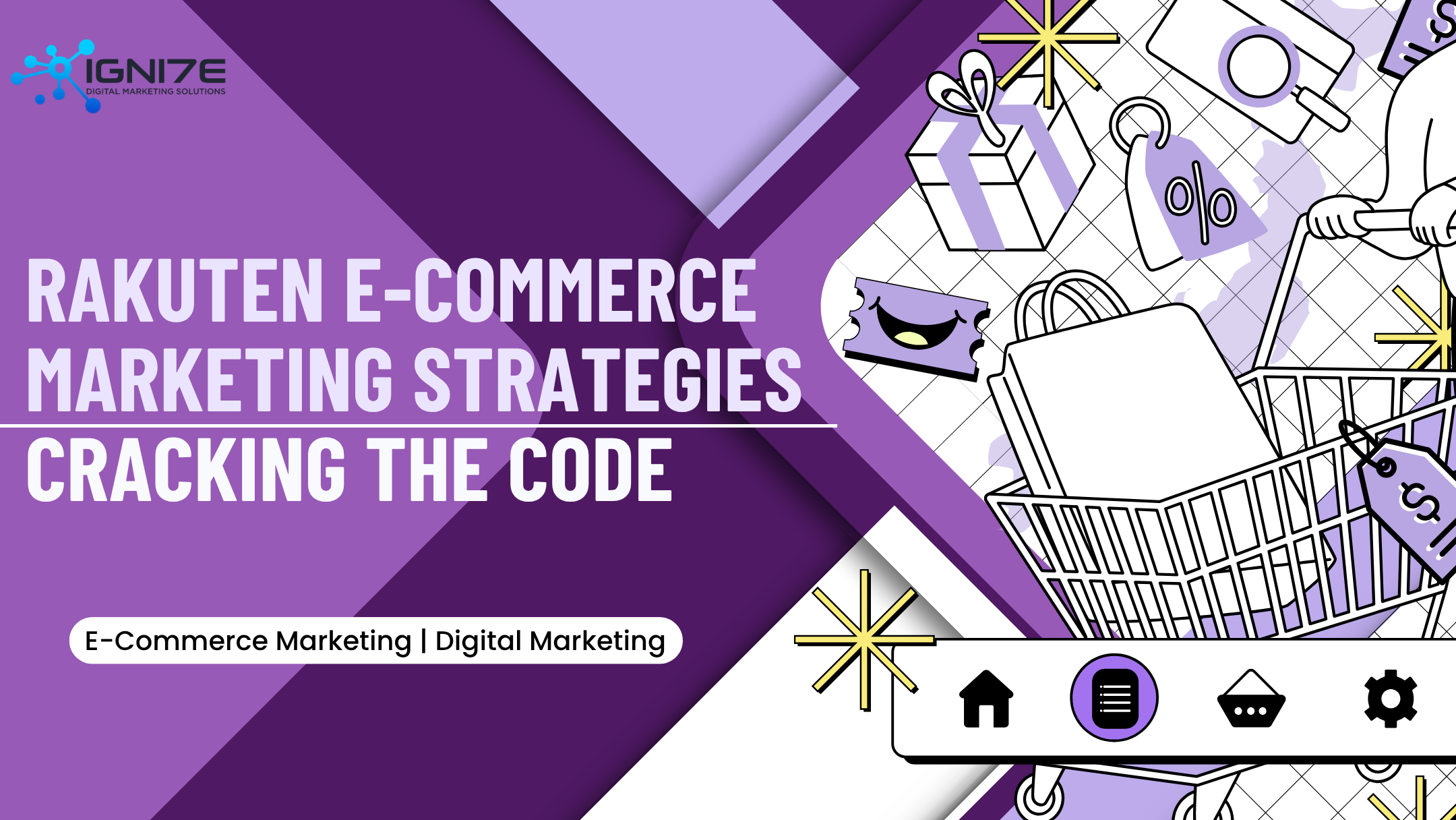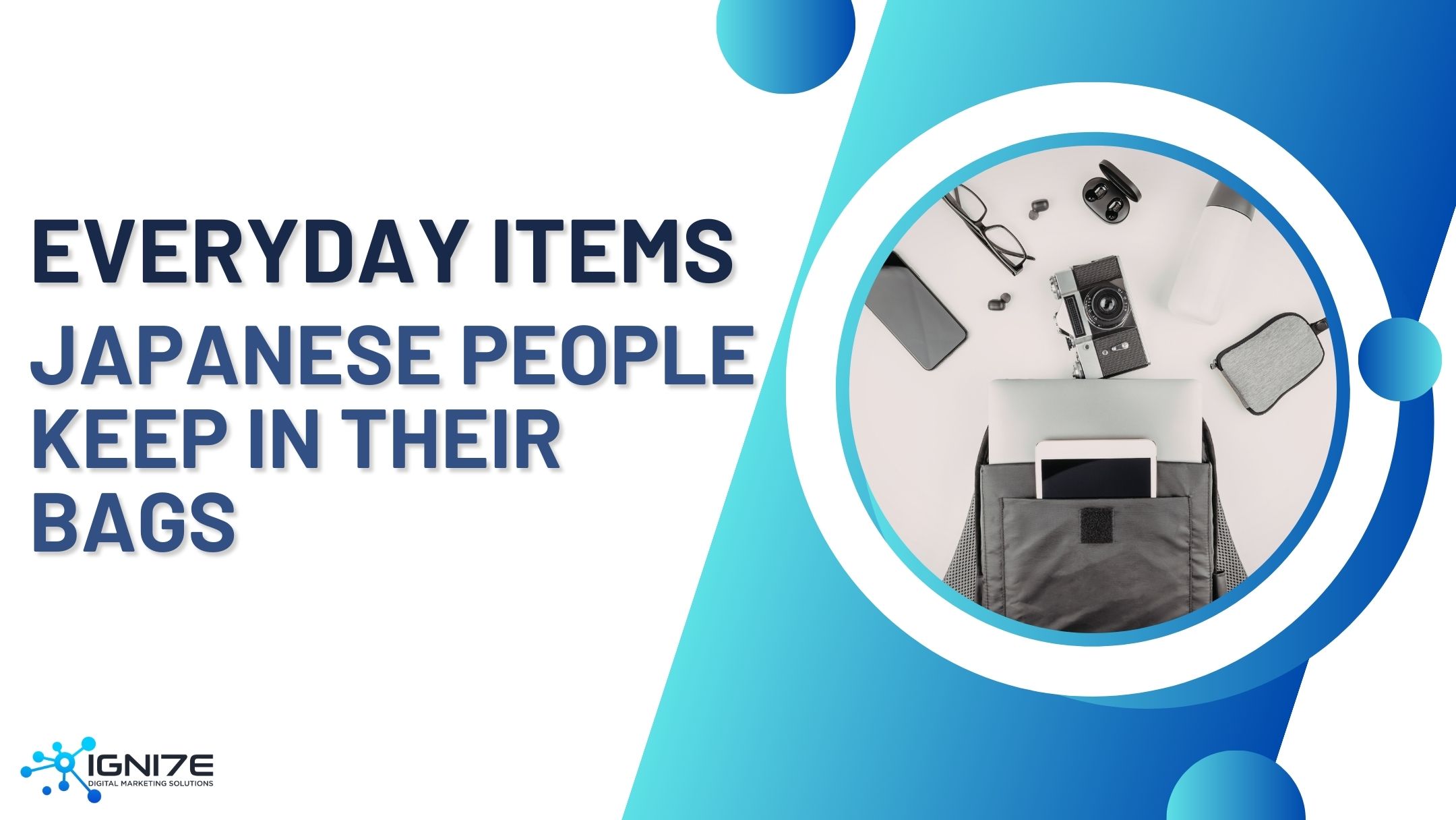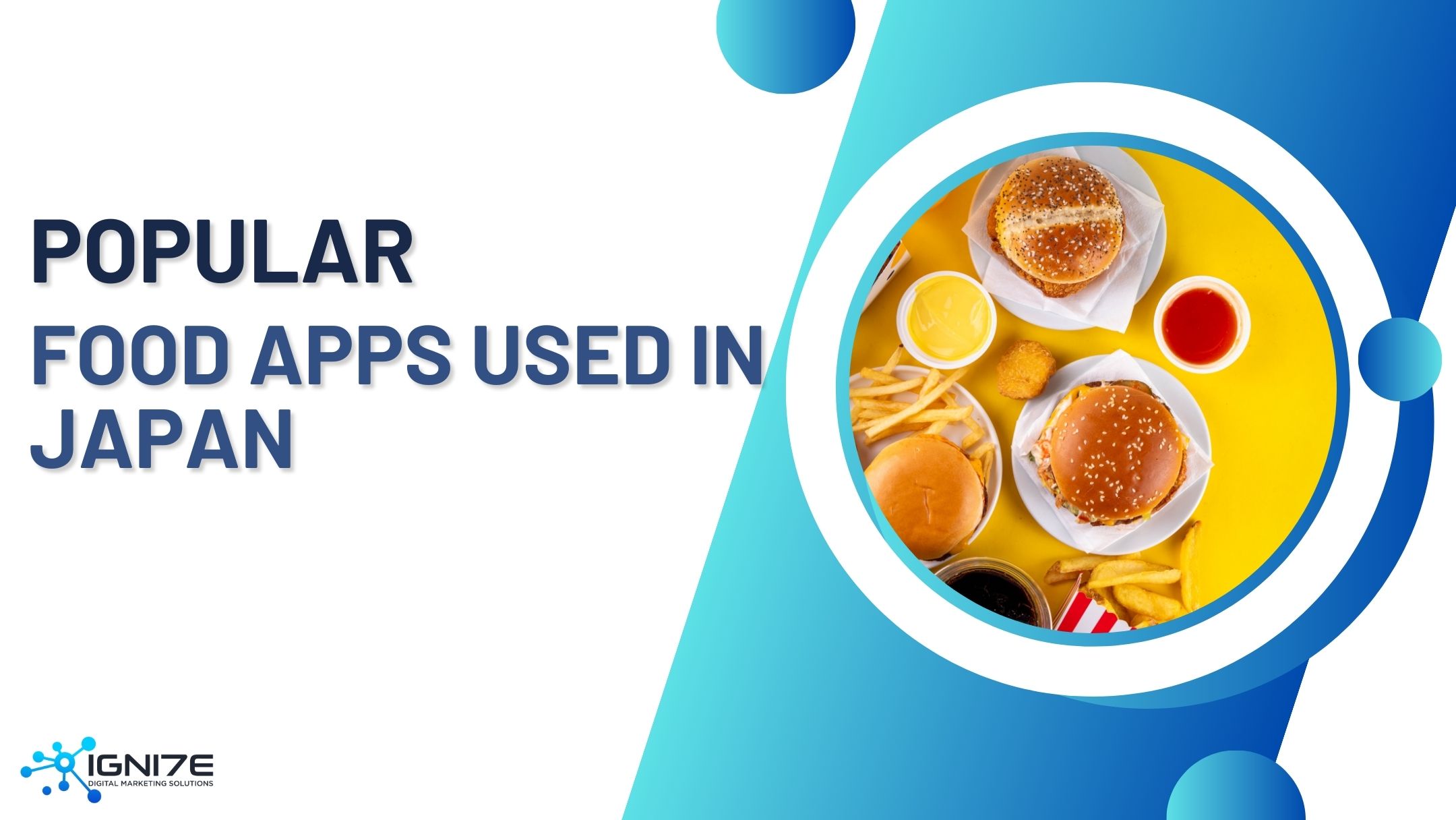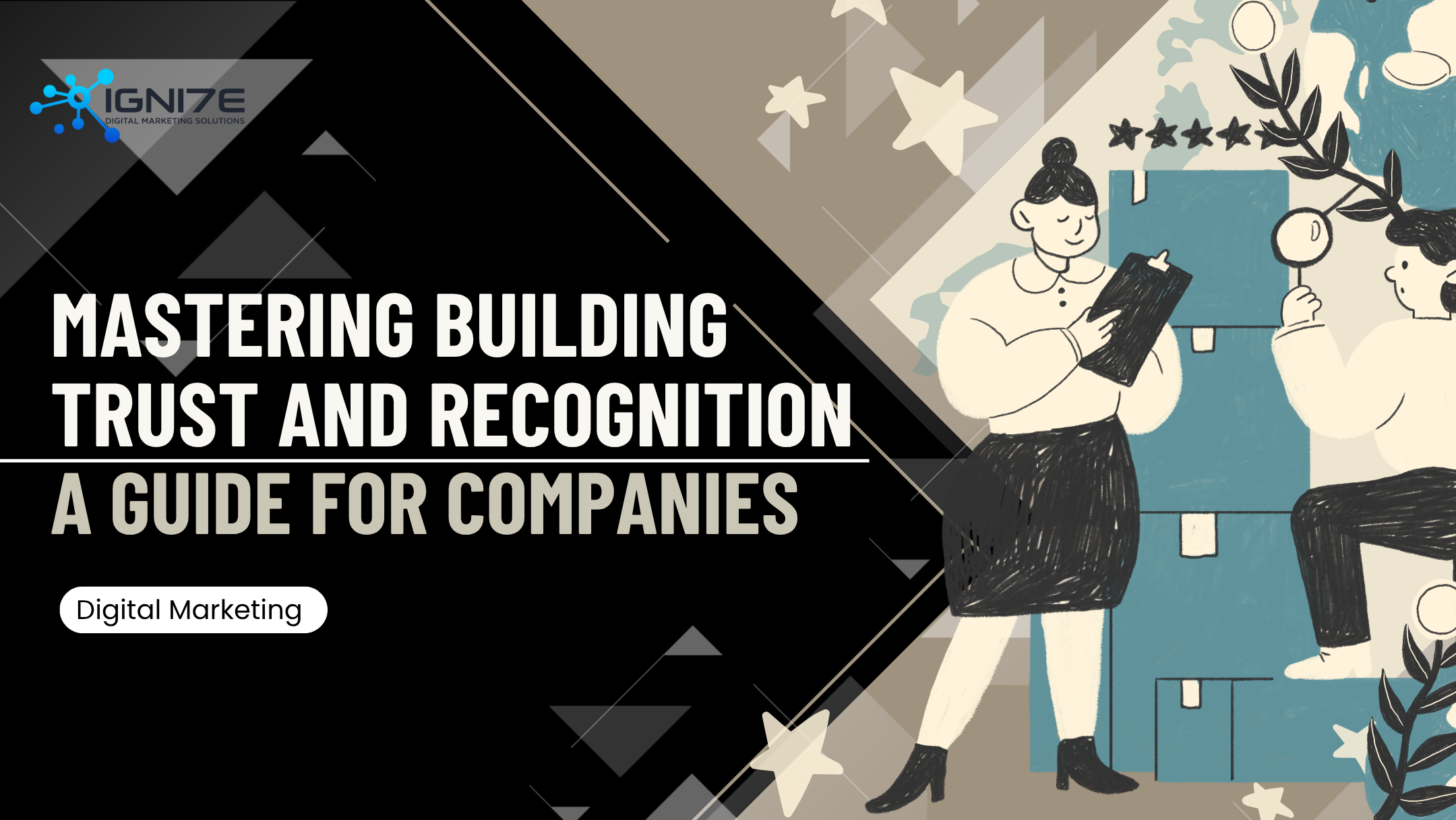Unlocking Japan’s Influencer Ecosystem: A Strategic Guide for Global Brands
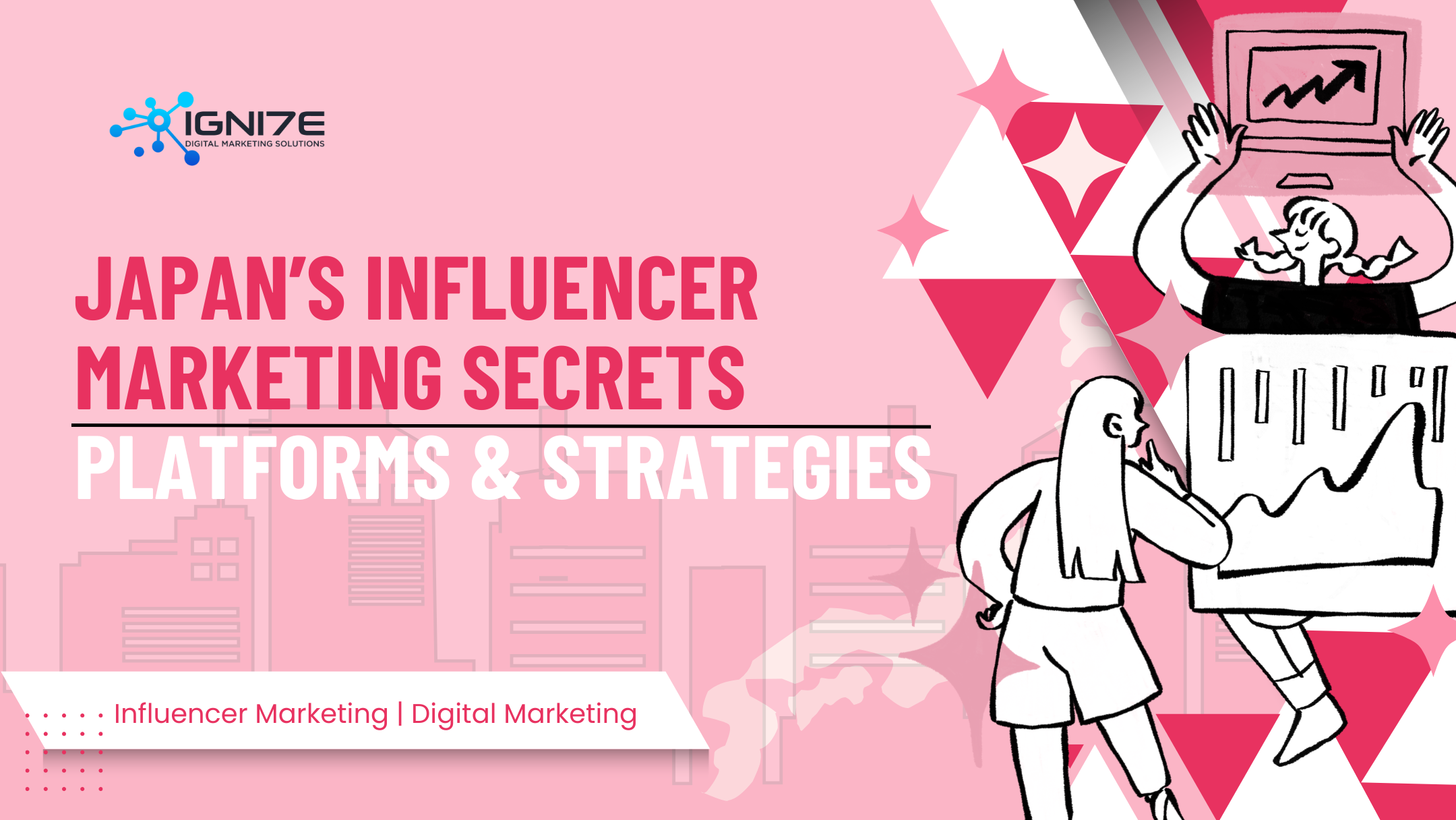
Influencer marketing may be a global concept, but its execution in Japan follows a very different set of rules. Foreign brands first entering Japan’s market often assume they can apply Western influencer strategies with minor localization tweaks—but that’s a costly mistake.
In Japan, cultural nuance, agency affiliations, and even the definition of “influence” itself are radically different. From YouTubers who never show their faces to VTubers managed like celebrities, Japan’s influencer scene blends entertainment tradition with cutting-edge digital formats in ways that demand a deeper understanding.
This guide compares Japan’s influencer marketing landscape with that of the U.S., helping global companies understand where to adjust, what to prioritize, and how to connect authentically with Japanese audiences.
Influencer Marketing in Japan: A Distinctive Landscape
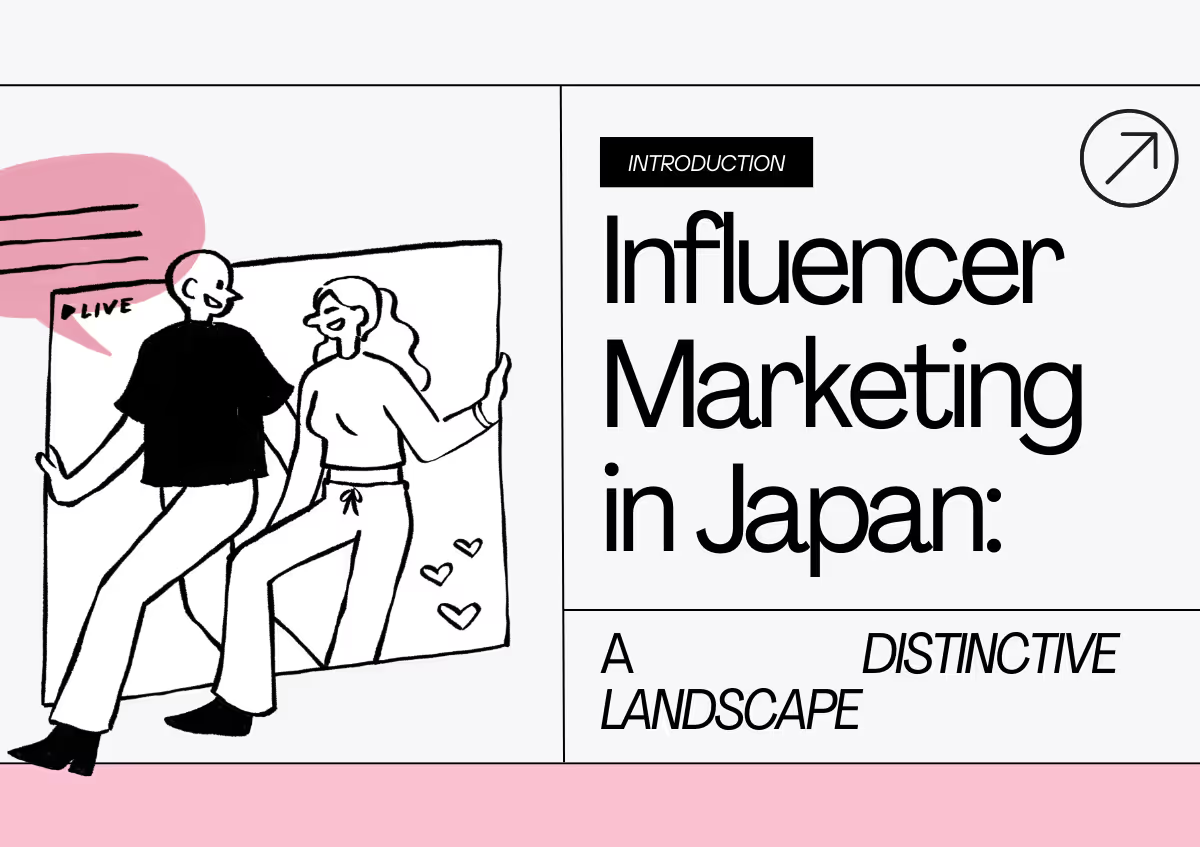
Influencer marketing in Japan shares global fundamentals, leveraging trusted content creators to promote products through platforms such as YouTube, Instagram, TikTok, and X. However, Japan's approach is profoundly shaped by its culture of subtlety, group identity, and preference for authenticity over overt promotion.
Rather than simply mimicking Western strategies, successful influencer marketing in Japan requires an understanding of the country’s unique dynamics, from how influencers are categorized to how trust and social status affect consumer behavior. Categories range from beauty, fashion, and gaming to parenting and tech, covering both mega-celebrities and niche nano-influencers.
Yet the real difference lies not just in what content is made, but who controls it, how influence is managed, and what being an influencer actually means in Japan. To grasp the differences fully, it’s essential to compare Japan’s influencer ecosystem with that of the United States, a market many foreign brands already know.
Influencers in Japan vs. the US: Structure, Culture, and Control
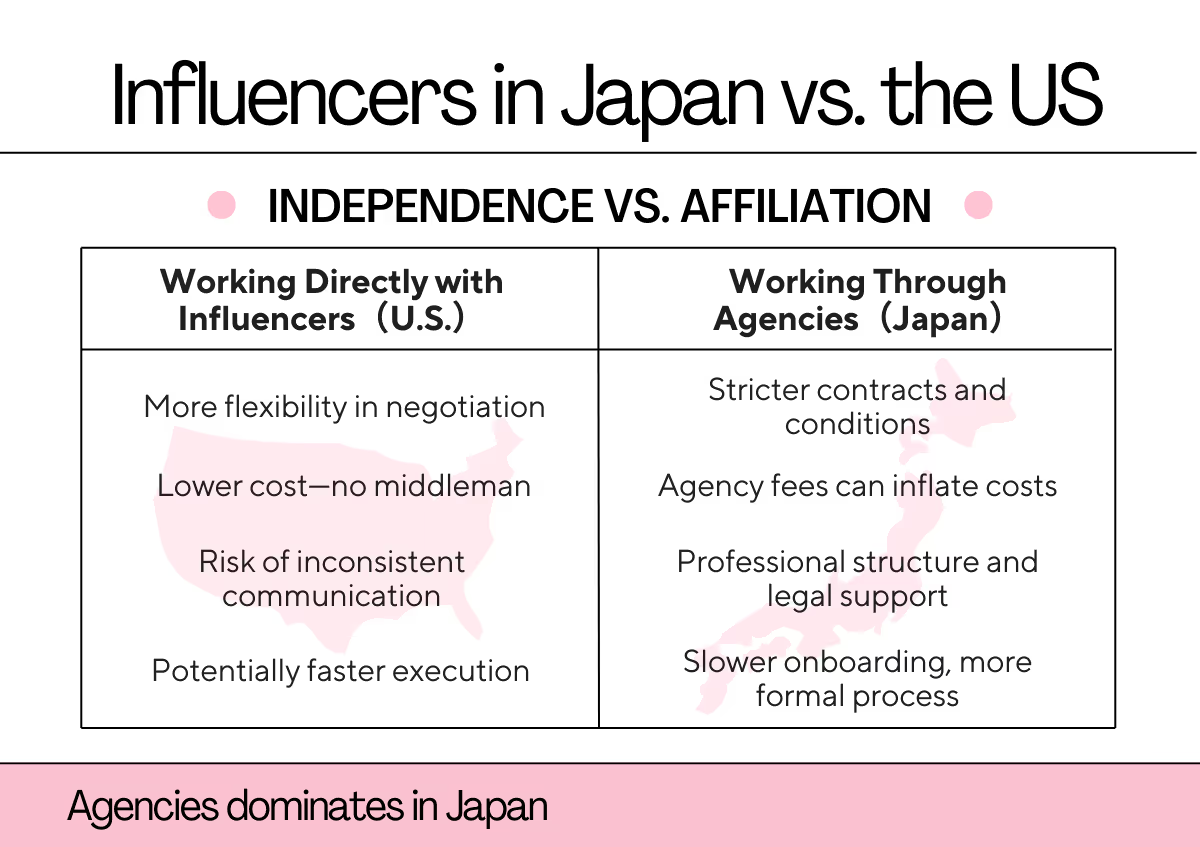
While influencer marketing exists in both Japan and the US, the ecosystem behind the influencer—how they operate, who manages them, and what drives their reputation—is fundamentally different. Understanding these structural and cultural distinctions is critical for international brands looking to succeed in Japan.
Independence vs. Affiliation
In the US, influencers are typically independent operators. They often manage their own personal brand as a business, launching product lines, building media empires, or even founding their own agencies. The influencer-as-entrepreneur model is standard, and brand deals are often negotiated directly with the creator or their representative.
In Japan, however, most influencers are affiliated with marketing agencies or talent offices (事務所), such as UUUM (a YouTuber-focused agency) or ライバー (a talent-livestreaming management agency). This affiliation is not just logistical—it carries cultural weight. Belonging to an agency provides social validation, brand safety, and a sense of legitimacy. It’s a holdover from Japan’s entertainment industry, where even rising talents rarely operate independently.
What This Means for Brands:
Foreign brands may initially prefer the speed and agility of US-style influencer deals. But in Japan, direct outreach can backfire if the influencer is part of an agency. Bypassing the agency risks damaging relationships or even being ignored entirely.
The Role of Agencies in Japan
In Japan, agencies serve as gatekeepers and coordinators in influencer marketing. They manage influencer discovery, content oversight, campaign execution, legal compliance, and performance tracking. For brands unfamiliar with the Japanese digital landscape, this infrastructure can be invaluable.
Agencies in Japan aren’t just intermediaries—they’re also cultural translators. They help foreign companies localize messaging, avoid cultural faux pas, and ensure campaigns meet Japanese standards of trust, politeness, and subtlety.
Why Agencies Dominate in Japan
- Trust and reputation: Japanese consumers highly value credibility and trust. Being affiliated with an agency adds a layer of perceived legitimacy.
- Legal and ethical compliance: Japan has stricter advertising and disclosure rules than many Western countries. Agencies ensure campaigns follow those laws.
- Efficient matching: Agencies utilize existing networks and data tools to identify influencers who genuinely align with your brand's values and target demographics.
- Time and resource savings: Especially for foreign brands, agencies streamline the process by managing strategy, communication, reporting, and cultural nuances.
If you are new to Japan, consider outsourcing and partnering with a local agency to ensure smoother campaign execution and avoid cultural missteps. Working outside the system may save money in the short term, but it risks long-term effectiveness.
The “Influencer” vs. “Talent” Divide: Blurring Lines in Japan

In most Western markets, especially the U.S., there’s a clear distinction between influencers and celebrities. Influencers typically build their reputations through social media and digital content, while celebrities—such as actors, musicians, and athletes—gain recognition through traditional media, including film, television, and sports. In Japan, however, the lines between these two roles are increasingly blurred. Understanding the hybrid space is crucial for international brands hoping to collaborate with the right voices.
In the U.S., Distinct Roles and Expectations
In the United States, influencers and celebrities operate in largely separate spheres:
For example, a Hollywood actor like Tom Cruise would rarely, if ever, create influencer-style content on platforms like YouTube or TikTok. The cultural expectation is that celebrities are "above" user-generated media and instead focus on their core entertainment roles.
In Japan, Overlap and Crossover Are the Norm
In contrast, Japan features a more fluid continuum between influencers and traditional entertainers (タレント or 芸能人). Many Japanese influencers move into TV, radio, and magazine appearances—spaces traditionally reserved for entertainers—while established talents increasingly embrace social media to connect directly with fans.
Real-World Examples:
- 渡辺直美 (Naomi Watanabe): A well-known comedian and fashion icon who seamlessly balances roles as a traditional celebrity and social media powerhouse.
- GACKT: A musician and actor who uses YouTube to share personal insights and promote products.
- ローランド (ROLAND): Originally a host club celebrity, now both a タレント and a digital influencer with strong brand affiliations.
This crossover creates a new hybrid: part entertainer, part creator—capable of commanding trust both in mass media and online communities.
Strategic Implications for Brands
The convergence of influencers and タレント in Japan creates unique opportunities and challenges:
- One Talent, Two Audiences
In Japan, a single figure can simultaneously appeal to mainstream television viewers and highly engaged social media followers. This dual reach makes them exceptionally powerful brand ambassadors.
- Increased Credibility Through Media Exposure
When an influencer appears on television or collaborates with a well-known agency, their perceived credibility increases. Unlike in the U.S., where celebrity status can create distance, in Japan, it often enhances relatability and trust.
- Marketing Versatility
Influencers in Japan are not just niche content creators—they can function as spokespeople in commercials, MCs at events, or brand narrators on YouTube. This flexibility offers brands multi-platform utility from a single collaboration.
- Higher Entry Cost and Management Complexity
Because many of these hybrid influencers are agency-managed, campaigns may require longer lead times, more structured negotiations, and agency fees. However, the payoff is a polished campaign with greater cultural relevance and resonance.
For Western brands entering Japan, it's essential to abandon the binary thinking of "celebrity vs. influencer." Instead, think in gradients. The Japanese market values versatility, and influencers are expected to wear many hats—creator, performer, and brand representative—often simultaneously.
By understanding and leveraging this unique blend, foreign companies can access a powerful, culturally rooted form of influence that doesn’t exist in quite the same way anywhere else.
The Platform Landscape: Same Tools, Different Rules
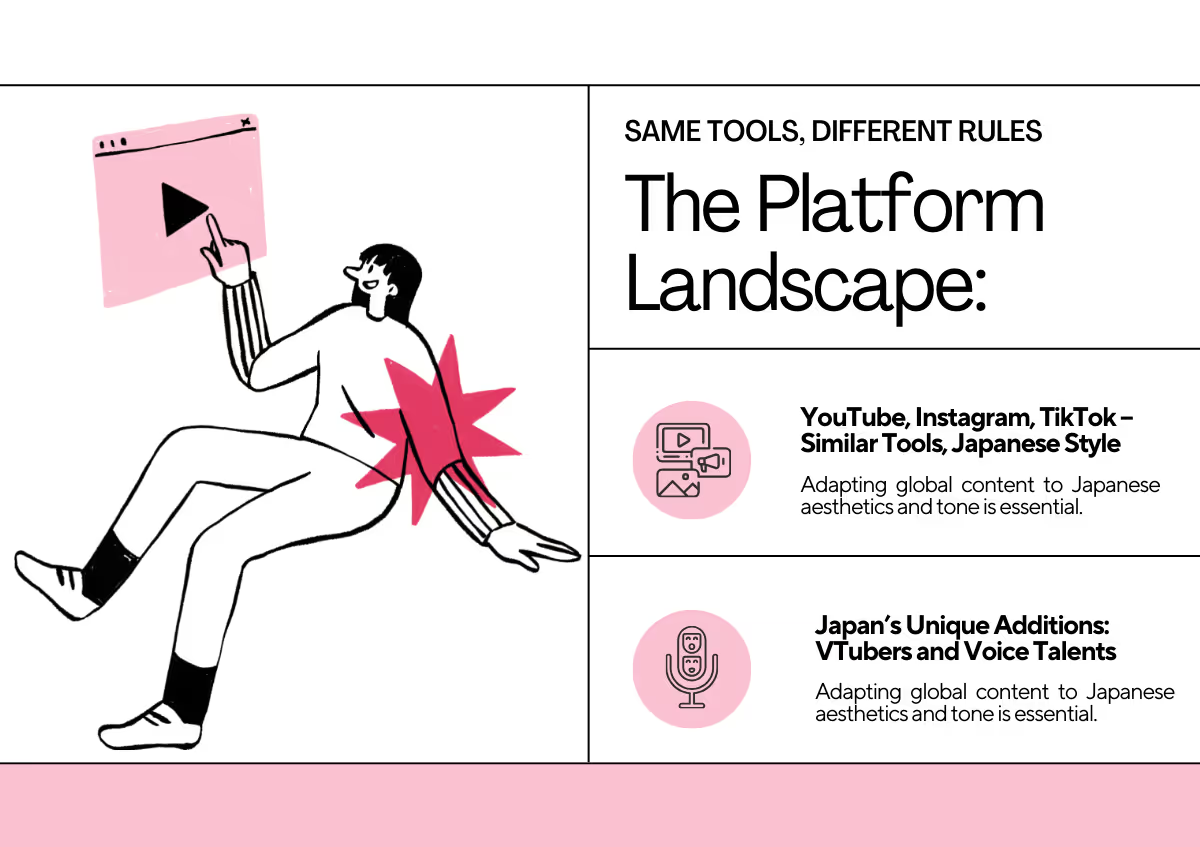
Japan shares many of the same social media platforms as other global markets—YouTube, Instagram, TikTok—but how these platforms are used, what kind of content performs well, and even who becomes influential are all shaped by cultural nuance. To succeed in Japan, international brands must understand that while the tools may be familiar, the rules of engagement are very different.
YouTube, Instagram, TikTok – Similar Tools, Japanese Style
At a glance, Japan’s influencer platforms mirror those in the West. YouTube, Instagram, TikTok, and X (formerly Twitter) are the dominant platforms. But beneath the surface, Japanese content consumption habits are more culturally restrained, detail-oriented, and aesthetically driven than in many Western markets.
Key Differences in Content Style and Audience Expectations:
- Tone and Personality: Japanese influencers often avoid brash, controversial, or overly personal content. The emphasis is on harmony (wa), modesty, and value-driven narratives. Even humor tends to be light, ironic, or situational, not abrasive.
- Visual Quality: On Instagram and YouTube, Japanese audiences gravitate toward polished, well-composed visuals. “Cohesive feeds” and thematic consistency are more critical than spontaneous uploads.
- Relatability > Fame: In Japan, relatability and sincerity often takes precedence over clout. Micro-influencers who share practical daily-life insights, cooking tips, or wellness routines frequently outperform flashier creators in terms of engagement and trust.
- Trust Through Subtlety: Hard-selling is frowned upon. Influencers succeed when their content integrates product mentions in a natural, story-driven way—often with a focus on quality, usefulness, and care.
Adapting global content to Japanese aesthetics and tone is essential. A loud, meme-heavy TikTok campaign might go viral in the U.S., but fall flat—or even feel off-putting—in Japan if not localized thoughtfully.
The social platforms may be the same, but Japan’s influencer environment rewards respectful storytelling, emotional resonance, and aesthetic cohesion. By recognizing the local expectations behind global tools—and tapping into unique Japanese formats, such as VTubers or voice-driven creators—foreign brands can build far more impactful, culturally fluent campaigns.
Japan’s Unique Additions: VTubers and Voice Talents
While Japan embraces global platforms, it also has its own influencer subcultures that don’t exist in most other markets. Chief among them: VTubers, voice actors (声優), and faceless creators who maintain anonymity while building massive followings.
VTubers: Japan’s Digital-First Celebrities
VTubers—virtual YouTubers—utilize anime-style avatars that are powered by motion capture and voice acting. Far from being niche, they are now a mainstream entertainment force.
- Hololive and Nijisanji, two major VTuber agencies, are publicly listed companies with a combined valuation exceeding $1 billion USD.
- VTubers dominate the “most super chatted” list on YouTube in Japan, outperforming real-world creators and even mainstream celebrities.
- Their appeal lies in their blend of anime fantasy and emotional relatability. Fans form deep parasocial bonds with these characters.
VTubers: Japan’s Digital-First Celebrities
VTubers are especially well-suited for campaigns in gaming, digital goods, cosmetics, or youth-oriented brands. Their virtual nature gives brands creative flexibility and emotional insulation.
Try working closely with VTuber agencies to align brand values and character personas. Authenticity matters even in a virtual world.
Faceless Fame: Voice-Driven and Anonymous Influencers
Japanese culture uniquely allows influencers to rise to fame without ever showing their face:
- Ado, the singer known for her powerful voice and refusal to reveal her face, is a mainstream pop icon.
- Popular creators in gaming, music, or ASMR niches often use avatars or masks.
- Voice actors (声優) are increasingly treated like idols, appearing on talk shows and YouTube while still being rooted in anime or gaming roles.
This openness to “faceless fame” reflects Japan’s deeper values—merit, skill, and character often take precedence over physical image or charisma. For brands, this unlocks fresh ways to engage audiences who are drawn to creators for what they do, not how they look.
How Influence is Built in Japan: From Anonymous to Idol

In the West—particularly the U.S.—influence is typically built around personal branding, face recognition, and charismatic personality. In contrast, Japan allows for a much broader spectrum of influence, where skills, character design, and even anonymity can become the foundation for massive popularity. This more flexible definition of “influencer” creates unique opportunities—and requires different marketing strategies—for foreign brands entering the Japanese market.
In the U.S., Visibility Equals Influence
In most Western contexts, especially in influencer marketing, face and personality are everything. Whether it's a fashion YouTuber, a TikTok comedian, or a lifestyle vlogger, the creator's physical appearance and personal charisma often serve as the primary vehicle of influence. This emphasis on visibility aligns with a culture that prizes individuality, individual storytelling, and aspirational lifestyles.
In short, in the U.S., you must be seen to be believed.
In Japan, Influence Can Be Faceless
Japan flips this expectation. Many influential figures build entire careers while concealing their identities, never showing their faces, avoiding interviews, or communicating through animated avatars. What matters more than visibility is the craft, relatability, and consistency of their content.
Examples of Faceless Fame:
- Ado – A breakout pop star known for her powerful voice and anime-style music videos, she has never revealed her face publicly.
- Yorushika, Zutomayo, Yama – Musicians who combine anonymity with deeply emotive songwriting, creating strong emotional bonds with listeners without visual branding.
- VTubers – Entire careers built on digital avatars and voice acting, creating immersive personas that fans can connect with on a personal level.
- Auto Moai – A painter who never discloses their identity, letting the visual art speak for itself.
This trend, known as faceless fame, challenges the notion that visibility is essential for influence. Instead, Japan prizes content that feels authentic, creative, and emotionally resonant, regardless of whether the creator is visible.
In Japan, anyone can become influential, not just the beautiful, bold, or extroverted. Whether it's a quiet illustrator, a masked musician, or a fully digital VTuber, Japanese audiences embrace a broader definition of influence. For international brands, this opens doors to work with creators who may not fit the Western mold, but are deeply trusted, wildly creative, and culturally aligned with their followers.
Why Anonymity Works in Japan
There are several cultural and practical reasons why anonymous influencers thrive in Japan:
This flexibility means that someone can become a top influencer based purely on their gaming skill, comedic timing, emotional singing, or relatable storytelling, not their image or lifestyle.
Marketing Implications for Foreign Brands
Understanding how influence is built in Japan requires brands to rethink their assessment of “influencer fit.” The most effective partner for your campaign might not have a camera-ready smile or an Instagram-perfect feed, but they may have:
- A voice that their audience instantly trusts
- A character design their fans adore
- A storytelling approach that blends naturally with your product
Note: DO NOT rule out anonymous creators. In Japan, influence isn’t limited to faces—it lives in voices, avatars, and emotional resonance.
Additionally, anonymity can be a valuable asset for brand safety. Faceless creators often maintain a tighter grip on their public image, with fewer risks tied to lifestyle controversies or off-brand behavior.
Merits & Demerits: Influencer Marketing Models Compared— Japan vs. U.S.
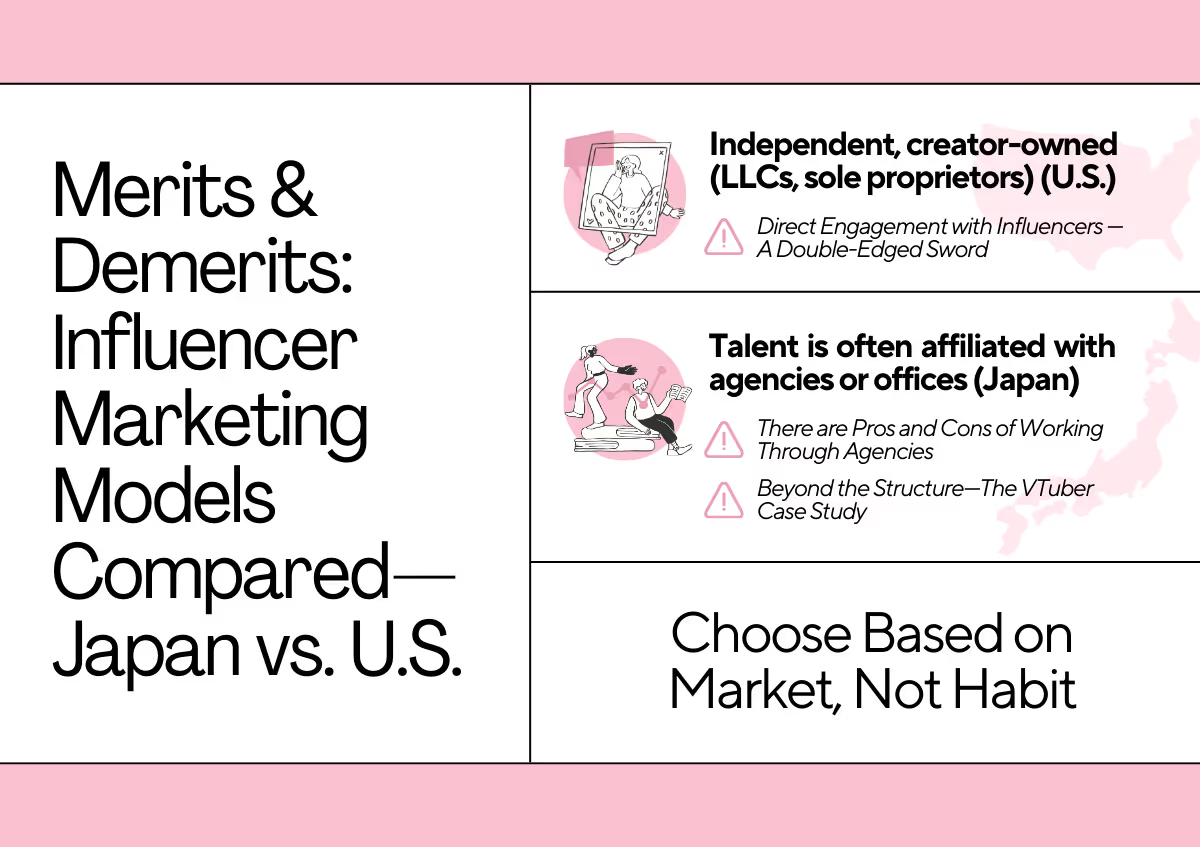
The influencer marketing ecosystems in Japan and the U.S. operate on fundamentally different principles—each with its own set of strengths and weaknesses. For foreign brands entering Japan, understanding these contrasts can help you develop the right strategy, avoid costly mistakes, and more effectively evaluate partnership options.
Comparing the Structures: Japan vs. the U.S.
In the U.S., speed, flexibility, and informality are often advantages. In Japan, structure, reliability, and cultural fluency often take precedence over quick execution.
The Pros and Cons of Working Through Agencies
In Japan, advertising norms and digital strategies—including link building—differ significantly from Western markets. Influencer marketing often runs through structured talent agencies rather than direct partnerships, emphasizing control, cultural alignment, and compliance over speed or flexibility. Below are the key pros and cons of working through agencies in the Japanese market:
Advantages (Japan Model):
- Consistency & Risk Management: Talent agencies ensure that influencers stay on-message, disclose ads properly, and follow Japan’s increasingly strict advertising regulations (e.g., stealth marketing laws from October 2023).
- Cultural Fluency: Agencies act as cultural translators, ensuring that your message aligns with Japanese tone, etiquette, and values.
- Operational Efficiency: Once relationships are established, agencies streamline execution—handling contracts, schedules, payments, and compliance.
- Audience Trust: Being affiliated with a well-known agency enhances an influencer’s perceived credibility in Japan, particularly for mass-market campaigns.
Drawbacks:
- Higher Costs: Agency fees can significantly increase the total campaign spend.
- Limited Negotiation Flexibility: Custom contracts or unconventional brand requests may be declined.
- Slower Communication: Due to added layers of approvals and internal workflows.
Direct Engagement with Influencers — A Double-Edged Sword
In Japan, working directly with influencers (as one might in the U.S.) can have benefits:
- Lower campaign costs
- Potentially faster deal-making
- Closer creative collaboration
However, these come with risks:
- Unfamiliarity with compliance laws
- Possible ghosting or communication gaps
- Difficulty vetting for reliability or brand fit without an intermediary
For brands without Japanese language capabilities or local contacts, working through a trusted agency is typically safer and more effective, especially for long-term brand-building.
Beyond the Structure—The VTuber Case Study
One of the most unique Japanese case studies in influencer modeling is the VTuber.
VTuber Merits:
- Creative freedom: No physical appearance constraints; avatars can be tailored to brand themes.
- Audience intimacy: Live interaction builds highly loyal communities.
- Low-risk visibility: No human scandals—just fictional characters.
- Cross-media adaptability: Can appear in ads, livestreams, anime, and even voice-activated customer service.
VTuber Challenges:
- High production costs: Motion tracking, voiceover work, and 3D modeling require a budget and specialized expertise.
- Management complexity: Requires a strong content strategy and effective agency coordination.
- Brand fit sensitivity: Audiences are very protective; misaligned collaborations can backfire.
- Limited IRL presence: VTubers typically don’t participate in physical events, which can be limiting for some campaigns.
Despite their virtual nature, VTubers are often managed like traditional タレント—with agencies, strict contracts, and brand vetting protocols.
Choose Based on Market, Not Habit
For U.S.-based marketers, the instinct may be to value flexibility, speed, and personality-driven branding. But Japan rewards discipline, structure, cultural subtlety, and long-term trust.
The optimal model depends on your product, campaign goal, and risk appetite:
- For agile, creator-led campaigns in fashion or beauty, direct influencer outreach or micro-influencers may be sufficient.
- For regulated industries or mainstream consumer brands: Work through established agencies and structured talent management.
- For cutting-edge youth engagement or anime and gaming markets, VTubers and faceless creators offer compelling opportunities—if well-managed.
The Flow of Influencer Marketing in Japan

Breaking into Japan’s influencer marketing scene isn’t just about finding someone with a large following—it’s about carefully navigating a culturally specific system built on trust, formality, and long-term thinking. Foreign brands must approach influencer marketing in Japan as a structured process that balances creativity with cultural sensitivity.
1. Choose the Right Engagement Model
Begin by deciding how you'll manage your influencer relationships:
- Work with agencies for high-profile, regulated, or long-term campaigns. They provide legal compliance, structure, and professionalism.
- Go direct when you need speed, cost-efficiency, or when targeting niche audiences with user-generated content.
2. Adapt to Japan’s Communication Style
What works in Western markets often feels too loud or aggressive for Japanese audiences.
- Subtle, emotionally resonant storytelling outperforms bold or sensational messaging.
- Harmony (和), authenticity, and quality are key to earning trust and engagement.
3. Select Influencers Strategically
Audience expectations vary across demographics:
- Younger audiences gravitate toward VTubers, faceless creators, and character-based influencers.
- Mainstream or older audiences trust タレント (TV personalities turned influencers) and cross-media creators.
- Don’t underestimate anonymous or voice-based influencers—they’re often more relatable and influential than flashy personas.
4. Plan for Slower but Safer Timelines
Agency-led campaigns often involve:
- Lengthy onboarding
- Detailed contract negotiation
- Structured approvals
But the reward is better compliance, brand alignment, and campaign longevity.
5. Think Long-Term, Not Just Viral
Quick wins don’t drive loyalty in Japan.
- Successful brands invest in building trust through repeated, value-driven influencer collaborations.
- Treat influencer partnerships as long-term brand assets—not one-off ad placements.
Conclusion: Embracing Japan’s Unique Influencer Landscape
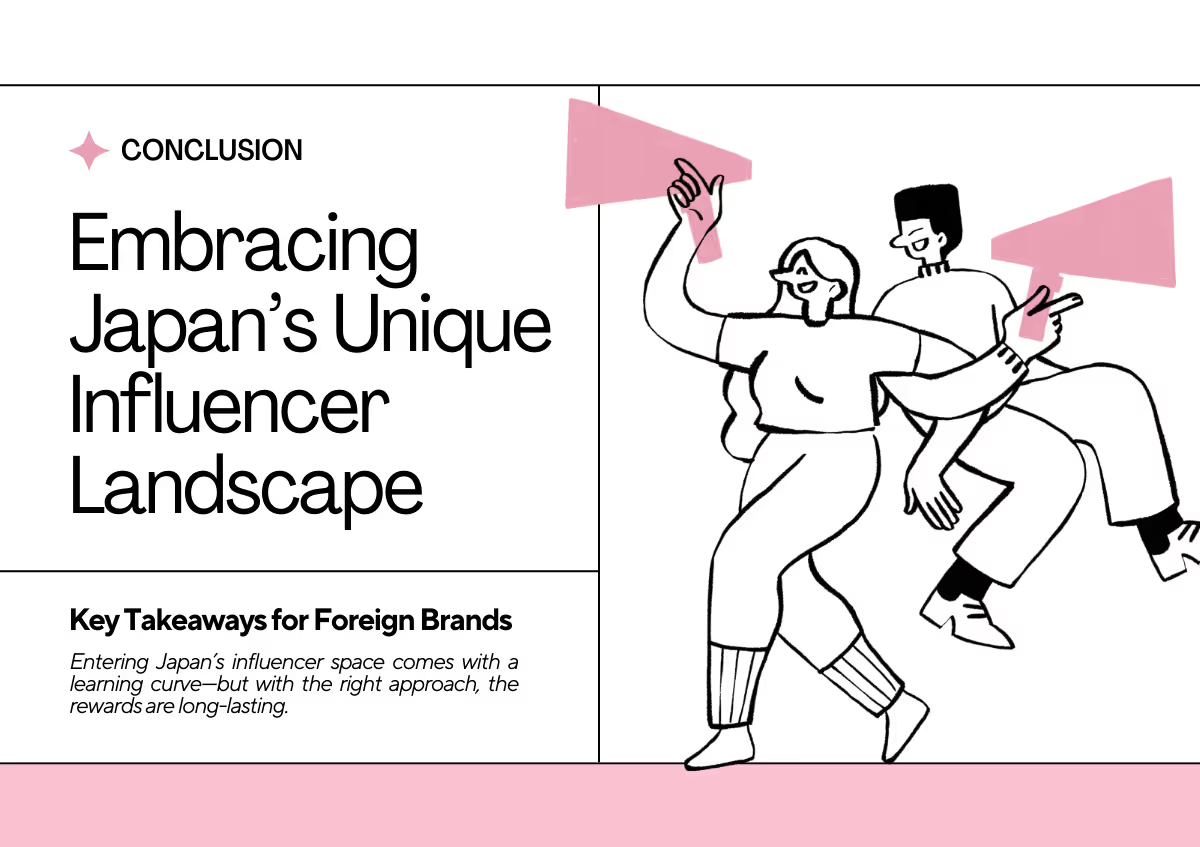
Japan doesn’t require you to start from scratch—but it does require you to adapt. Winning here means understanding the rules of engagement, respecting cultural nuances, and investing in authentic, long-term relationships.
Instead of pushing Western influencer formulas, smart brands blend into Japan’s structured, values-driven ecosystem—choosing the right channels, the right creators, and the right message for the market. Whether through タレント, VTubers, or anonymous creators, success comes from meeting the audience where they are—with humility, consistency, and respect.
Key Takeaways for Foreign Brands
Entering Japan’s influencer space comes with a learning curve—but with the right approach, the rewards are long-lasting. Here’s what to keep in mind:
- Agencies offer structure and brand safety, especially for complex or high-profile campaigns.
- Going direct is fast and flexible, ideal for smaller budgets and niche outreach.
- Messaging must be culturally tuned—quiet confidence, sincerity, and emotional connection beat bold promotion.
- Audience targeting should guide influencer selection, not just follower count.
- Slower timelines bring better outcomes, from compliance to brand alignment.
- Long-term thinking wins—trust is the true currency in Japan’s influencer economy.
By keeping these key points in mind, foreign brands can approach Japan’s influencer marketing landscape with clarity and confidence. Success here isn’t about making noise—it’s about making meaningful connections. With the right strategy, cultural understanding, and long-term commitment, your brand can earn not just attention, but lasting trust in one of the world’s most discerning digital markets.
Ready to Ignite Your Brand in Japan?

Influencer marketing in Japan is not just about localizing language—it’s about localizing intent, approach, and relationships.
At IGNITE, we help foreign brands navigate Japan’s digital ecosystem with precision and cultural fluency. Whether you’re building a campaign from scratch or scaling an existing strategy, our bilingual team of experts will help you connect with the right creators, craft the right message, and deliver results that resonate.
Let’s localize your voice. Let’s scale your reach. Let’s open Japan—together.
Contact IGNITE today to schedule a free consultation and discover how we can help your brand thrive in Japan’s digital landscape.



